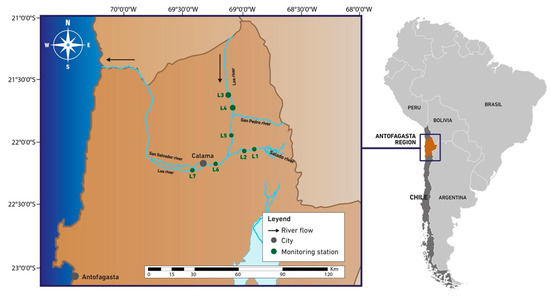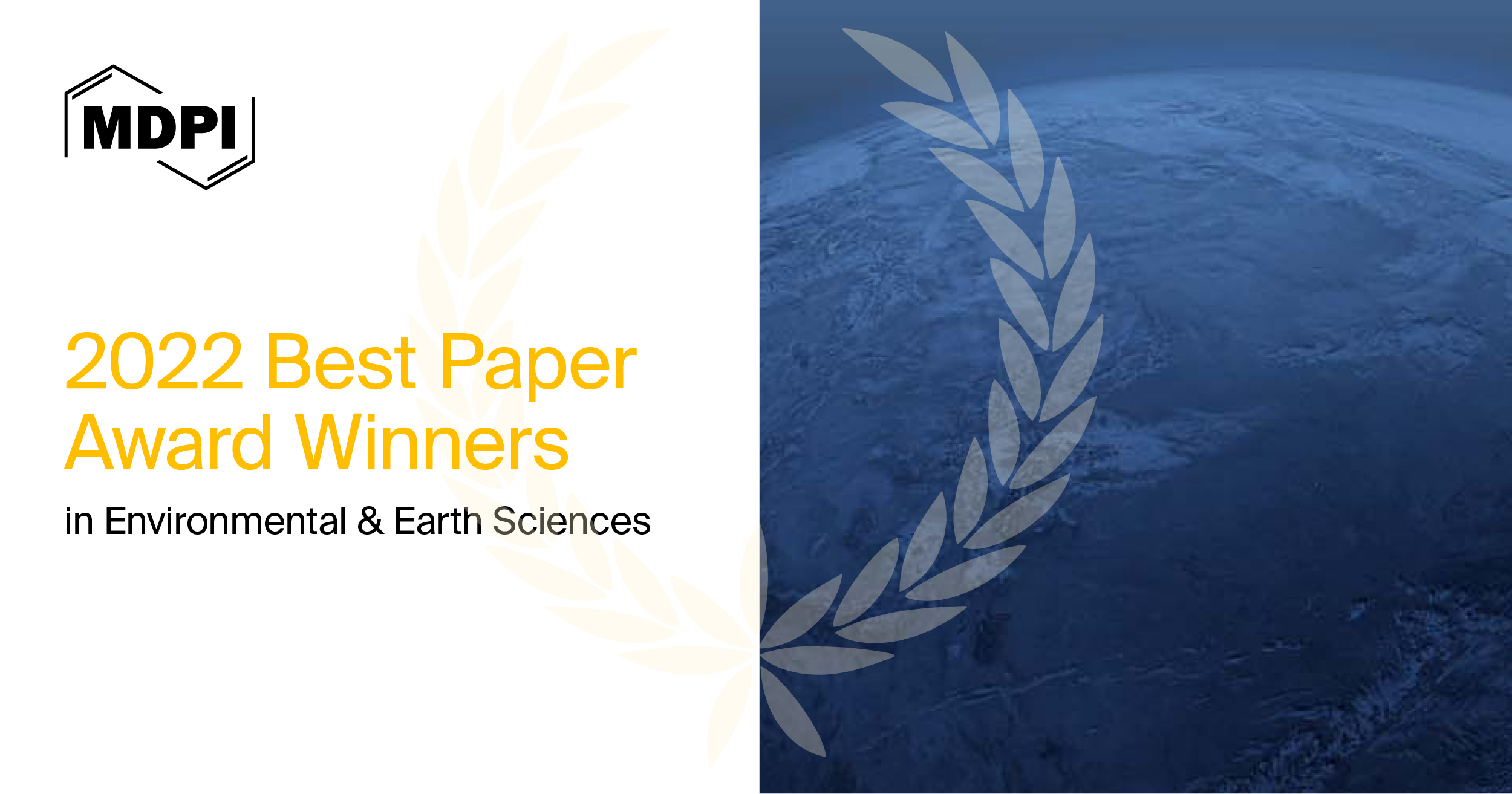-
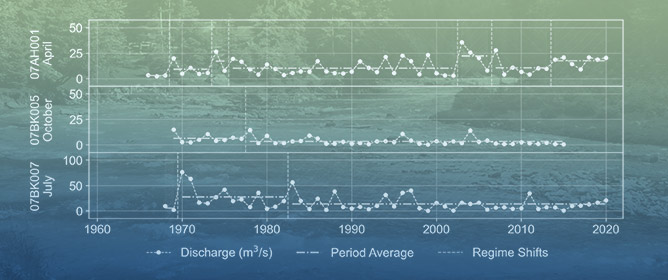 A Robust Regime Shift Change Detection Algorithm for Water-Flow Dynamics
A Robust Regime Shift Change Detection Algorithm for Water-Flow Dynamics -
 A Review of the Application of the Soil and Water Assessment Tool (SWAT) in Karst Watersheds
A Review of the Application of the Soil and Water Assessment Tool (SWAT) in Karst Watersheds -
 An Overview of Ecological Indicators of Fish to Evaluate the Anthropogenic Pressures in Aquatic Ecosystems: From Traditional to Innovative DNA-Based Approaches
An Overview of Ecological Indicators of Fish to Evaluate the Anthropogenic Pressures in Aquatic Ecosystems: From Traditional to Innovative DNA-Based Approaches
Journal Description
Water
Water
is a peer-reviewed, open access journal on water science and technology, including the ecology and management of water resources, and is published semimonthly online by MDPI. Water collaborates with the International Conference on Flood Management (ICFM) and Stockholm International Water Institute (SIWI). In addition, the American Institute of Hydrology (AIH), The Polish Limnological Society (PLS) and Japanese Society of Physical Hydrology (JSPH) are affiliated with Water and their members receive a discount on the article processing charges.
- Open Access— free for readers, with article processing charges (APC) paid by authors or their institutions.
- High Visibility: indexed within Scopus, SCIE (Web of Science), Ei Compendex, GEOBASE, GeoRef, PubAg, AGRIS, CAPlus / SciFinder, Inspec, and other databases.
- Journal Rank: JCR - Q2 (Water Resources) / CiteScore - Q1 (Water Science and Technology)
- Rapid Publication: manuscripts are peer-reviewed and a first decision is provided to authors approximately 16.6 days after submission; acceptance to publication is undertaken in 2.9 days (median values for papers published in this journal in the first half of 2023).
- Recognition of Reviewers: reviewers who provide timely, thorough peer-review reports receive vouchers entitling them to a discount on the APC of their next publication in any MDPI journal, in appreciation of the work done.
- Companion journals for Water include: GeoHazards and Hydrobiology.
Impact Factor:
3.4 (2022);
5-Year Impact Factor:
3.5 (2022)
Latest Articles
Water Quality Classification and Machine Learning Model for Predicting Water Quality Status—A Study on Loa River Located in an Extremely Arid Environment: Atacama Desert
Water 2023, 15(16), 2868; https://doi.org/10.3390/w15162868 - 08 Aug 2023
Abstract
Water is the most important resource for human, animal, and vegetal life. Recently, the use of artificial intelligence techniques, such as Random Forest, has been combined with other techniques, such as models of logical–mathematical reasoning, to generate predictive water quality models. In this
[...] Read more.
Water is the most important resource for human, animal, and vegetal life. Recently, the use of artificial intelligence techniques, such as Random Forest, has been combined with other techniques, such as models of logical–mathematical reasoning, to generate predictive water quality models. In this study, a rule-based inference technique to generate water quality labels is described, using historical physicochemical parameter data on seven water monitoring stations in Loa River, collected by the Chilean Ministry of the Environment. Next, a predictive model of water quality status was created, using Random Forest, physicochemical parameters, and expert knowledge. The validation of Random Forest results is described using three quality indicators from the machine learning model: accuracy (acc), precision (p), and recall (r). This paper describes dataset preparation, the refinement of the threshold values used for the physicochemical parameters most significant in the class, and the predictive model labeling water quality. The models obtained yielded the following mean values: acc = 0.897, p = 89.73, and r = 0.928. The ML model reported here is novel since no previous studies of this kind predict the water quality of Loa River, located in an extremely arid zone. This study also helps to create specific knowledge to predict freshwater quality.
Full article
(This article belongs to the Section New Sensors, New Technologies and Machine Learning in Water Sciences)
►
Show Figures
Open AccessArticle
Scour Development Around an Oblong Bridge Pier: A Numerical and Experimental Study
Water 2023, 15(16), 2867; https://doi.org/10.3390/w15162867 - 08 Aug 2023
Abstract
The complex flow structure around bridge piers is challenging for both experimental and numerical studies. Therefore, investigating the capabilities of Computational Fluid Dynamics (CFD) tools in resolving the flow structure and the mechanism of sediment entrainment into and out of the scour hole
[...] Read more.
The complex flow structure around bridge piers is challenging for both experimental and numerical studies. Therefore, investigating the capabilities of Computational Fluid Dynamics (CFD) tools in resolving the flow structure and the mechanism of sediment entrainment into and out of the scour hole remains a challenging task. In this study, the scour depth around an oblong bridge pier and the bed shear stress distributions in time and space were numerically investigated using the Computational Fluid Dynamics (CFD) tool Sediment Simulation In Intakes with Multiblock option (SSIIM). Clear water scour conditions and sand of known granulometric composition were considered in accordance with the experimental study carried out. Laboratory data and the results of a scour characterization around a 0.11 m wide oblong bridge pier were considered to calibrate and validate the numerical model. The averaged form of the Navier–Stokes equations was considered to simulate the turbulent flow fields in anticipation of long time scales. The results show that calibrated numerical models can reproduce measured scour depths in the laboratory environment with considerable accuracy, with an average relative error of less than 3%, especially around oblong bridge piers.
Full article
(This article belongs to the Special Issue The Application of Hydraulic Model and Numerical Simulation in River Engineering)
►▼
Show Figures

Figure 1
Open AccessArticle
Probabilistic Analysis of Floods from Tailings Dam Failures: A Method to Analyze the Impact of Rheological Parameters on the HEC-RAS Bingham and Herschel-Bulkley Models
by
and
Water 2023, 15(16), 2866; https://doi.org/10.3390/w15162866 - 08 Aug 2023
Abstract
The difficulty in determining the rheological characteristics of tailings inside reservoirs as well as their intrinsic variability adds uncertainty to tailings dam failures in flood studies. Uncertainty propagation in non-Newtonian hydrodynamic models stands as a great scientific challenge. This article explores the sensibility
[...] Read more.
The difficulty in determining the rheological characteristics of tailings inside reservoirs as well as their intrinsic variability adds uncertainty to tailings dam failures in flood studies. Uncertainty propagation in non-Newtonian hydrodynamic models stands as a great scientific challenge. This article explores the sensibility of tailings dam breach flood mapping to rheological parameters in Bingham and Herschel-Bulkley (H-B) models. The developed approach was based on the probabilistic Latin Hypercube Sampling of rheological parameters. It was automated to propagate uncertainty throughout multiple hydrodynamic simulations using the HEC-RAS v.6.1 software. Rheological parameter ranges and distributions were based on a broad bibliographic review. Bingham models were revealed to be more sensitive than H-B in terms of simulated min-max area values: for Bingham, flood areas, maximum depths, and arrival times varied by 17.9%, 9.3%, and 8.2%, respectively; for H-B, variations were 25.7%, 5.1%, and 3.9%. However, Bingham was less sensitive in terms of hydrodynamically associated probability: high probability ratios were related to a small range of simulated areas in Bingham, while H-B presented great variability. Finally, for each model, the parameters that affect uncertainty the most were identified, reinforcing the importance of determining them properly. Furthermore, the identified parameter ranges for both models should be valuable for defining variable value boundaries for flood sensitivity tests on specific tailings materials for other case studies. The automated algorithm can be used or adapted for specific tests with other hydrodynamic simulations.
Full article
(This article belongs to the Special Issue Advances in Dam-Break Modeling for Flood Hazard Mitigation: Theory, Numerical Models, and Applications in Hydraulic Engineering)
►▼
Show Figures

Figure 1
Open AccessArticle
Harbour Hydro-Morphodynamics and Freshwater Discharges: The La Spezia Arsenale Case
Water 2023, 15(16), 2865; https://doi.org/10.3390/w15162865 - 08 Aug 2023
Abstract
The hydrodynamics and sediment transport at the microtidal harbour of La Spezia Arsenale (Liguria, Italy) were studied through a numerical approach, with the objective of providing useful information for: (1) the understanding of the hydro-morphodynamics of microtidal harbour settings and (2) the operation
[...] Read more.
The hydrodynamics and sediment transport at the microtidal harbour of La Spezia Arsenale (Liguria, Italy) were studied through a numerical approach, with the objective of providing useful information for: (1) the understanding of the hydro-morphodynamics of microtidal harbour settings and (2) the operation management and planning for the Arsenale, the pivotal harbour for the Italian Navy. Three different scenarios were used to parametrically gain knowledge on the role of extreme (100-year return period) meteomarine forcing. FUNWAVE and Delft3D were used to simulate, respectively, the wave propagation from the open sea toward the Arsenale and the influence of two freshwater streams on the basin circulation. The first scenario was aimed at understanding the effect of wind waves and swell on the basin dynamics; the second scenario was set up to inspect the role of the rivers’ discharges on the Arsenale hydro-morphodynamics; the third scenario combined all of the above forcings. All the simulations also included the tidal forcing and were run under two different wind directions. We found that the hydrodynamics inside the Arsenale were mainly influenced by the tide and the wind; the former caused the water to enter/exit the basin during the flood/ebb phases, respectively, and the latter influenced the circulation cell, whose sense of rotation depended on the wind direction. In addition, the discharge of the Lagora stream, debouching into the sea close to the Arsenale entrance, partially entered the basin and created an eddy whenever its direction was opposite to that of the wind-forced circulation cell, while the Caporacca stream, flowing directly into the Arsenale, mainly fed the dominant circulation without altering it. On the other hand, the morphodynamics were strongly affected by the rivers’ discharges, which were solely responsible for the supply of sediment to the basin. Also, the major influence on the sediment transport was exerted by the rivers and the wind forcing. Small sedimentation rates were observed in the Arsenale close to the rivers’ mouths, particularly after the occurrence of the rivers’ discharges, while no siltation due to waves took place. This study evaluated for the first time the influence of freshwater streams flowing nearby/into the Arsenale, representative of semi-enclosed microtidal ports located in the vicinity of rivers. It was found that the contribution of the rivers to the hydro-morphodynamics of the Arsenale cannot be neglected; indeed, it represents one of the main forcings of the harbour dynamics and should, therefore, be considered from a management viewpoint.
Full article
(This article belongs to the Topic Aquatic Environment Research for Sustainable Development)
►▼
Show Figures
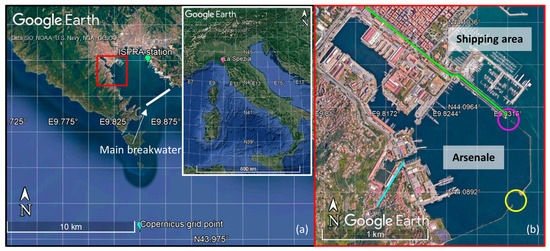
Figure 1
Open AccessEditorial
The Ecological Quality Status Assessment of Marine and Transitional Ecosystems: New Methods and Perspectives for the Future
Water 2023, 15(16), 2864; https://doi.org/10.3390/w15162864 (registering DOI) - 08 Aug 2023
Abstract
Worldwide legislation emphasizes the need to monitor the health of aquatic ecosystems based on the response of biological quality elements to environmental conditions. A plethora of methodologies have been suggested in this sense. Lately, substantial efforts have led to the exploration of new
[...] Read more.
Worldwide legislation emphasizes the need to monitor the health of aquatic ecosystems based on the response of biological quality elements to environmental conditions. A plethora of methodologies have been suggested in this sense. Lately, substantial efforts have led to the exploration of new biological quality elements from the meiobenthic compartment and the implementation of new methodologies based on environmental DNA. Due to their short life-cycles, meiofaunal organisms respond quickly to environmental variability. Changes in population dynamics and species composition are indicative of changes in environmental conditions. Recent pioneer studies have shown that biotic indices based on benthic foraminifera and nematodes can efficiently assess the health of transitional and marine ecosystems. The use of environmental DNA, as well as other fingerprinting techniques, is increasing in biomonitoring studies, and further calibrations are still needed to implement this method. The published papers in this Special Issue represent well the wide applicability of meiobenthic groups, i.e., benthic foraminifera and nematodes, allowing us to address a key ecological knowledge gap in order to convince decision makers and stakeholders about the advantage of introducing new biological quality elements in environmental biomonitoring.
Full article
(This article belongs to the Special Issue Ecological Quality Status Assessment of Aquatic Ecosystems: New Methods and Perspectives for the Future)
Open AccessArticle
Effects of Decomposition of Submerged Aquatic Plants on CO2 and CH4 Release in River Sediment–Water Environment
by
, , , , , , and
Water 2023, 15(16), 2863; https://doi.org/10.3390/w15162863 - 08 Aug 2023
Abstract
Organic matter was increased due to the input of plant litter, resulting in changes in the physicochemical properties and enhancement of greenhouse gas (GHG) emissions in water bodies. There are few reports on effects of decomposition of aquatic plants on GHGs emissions. This
[...] Read more.
Organic matter was increased due to the input of plant litter, resulting in changes in the physicochemical properties and enhancement of greenhouse gas (GHG) emissions in water bodies. There are few reports on effects of decomposition of aquatic plants on GHGs emissions. This study investigated the effects of the degradation of two aquatic plants, Potamogeton crispus and Typha orientalis Presl, upon release of CO2 and CH4 at the sediment–water interface. During early decomposition, the release of CO2 and CH4 at the sediment–water interface was increased by the degradation of the two aquatic plants, and release flux of CO2 and CH4 were increased rapidly at first and then decreased. Due to the differences in properties of C, lignin, cellulose and other components of the plants, the Potamogeton crispus group obtained higher abundance of genes relevant to CO2 and CH4 metabolism, which leads to the increase of CO2 and CH4 emissions compared with that of the Typha orientalis Presl. In addition, dissolved oxygen and pH were decreased due to the decomposition of organic matter in the plant residues at the sediment–water interface, resulting in growth of anaerobic microorganisms. The increase of the relative abundance of anaerobic microorganisms promoted the decomposition of organic matter in the sediment and the enhancement of cell respiration, promoting the release of CH4 and CO2 during the decomposition of aquatic plants.
Full article
(This article belongs to the Section Biodiversity and Functionality of Aquatic Ecosystems)
►▼
Show Figures
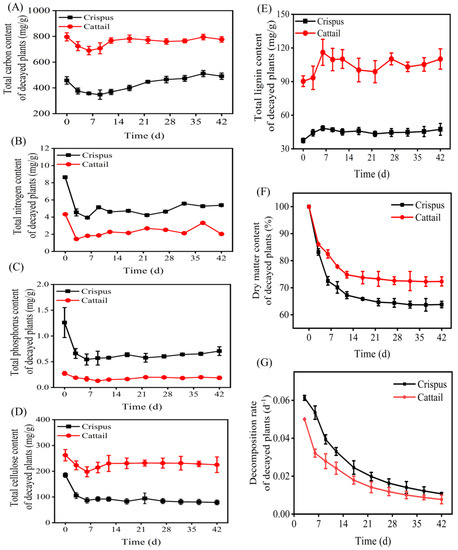
Figure 1
Open AccessArticle
Hydrogeophysical Investigation in Parts of the Eastern Dahomey Basin, Southwestern Nigeria: Implications for Sustainable Groundwater Resources Development and Management
by
, , , , and
Water 2023, 15(16), 2862; https://doi.org/10.3390/w15162862 - 08 Aug 2023
Abstract
Geoelectrical resistivity measurements were conducted in five locations within the eastern portion of the Dahomey basin for the purpose of subsurface evaluation and detecting saturated zones. The locations are Covenant University (L1), Bells University (L2), Oju-Ore-Ilogbo Road (L3), Obasanjo-Ijagba Road (L4), and Iyana
[...] Read more.
Geoelectrical resistivity measurements were conducted in five locations within the eastern portion of the Dahomey basin for the purpose of subsurface evaluation and detecting saturated zones. The locations are Covenant University (L1), Bells University (L2), Oju-Ore-Ilogbo Road (L3), Obasanjo-Ijagba Road (L4), and Iyana Iyesi (L5). The study was carried out to avert the common challenges of drilling low-yield groundwater boreholes in the area. A total of 30 Vertical Electrical Soundings (VES) and five two-dimensional Electrical Resistivity Tomography (ERT) data sets have been acquired along the study areas. The geoelectrical resistivity results were integrated with the borehole logs to generate the spatial distribution of the subsurface lithologies in the area. The delineated subsurface lithologies include the topsoil (lateritic clay), clayey sand, sandy clay, fine silty sand, coarse sand, and shale/clay units. The fine silty sand and coarse sand units were identified as the two main aquifer units within the area. The depths to the upper aquifer unit in the area include 31.7–96.7 m, 38.5–94.0 m, 30.7–57.5 m, 39.1–63.4 m, and 46.9–57.5 m for locations L1, L2, L3, L4, and L5, respectively. At the same time, the depths to the lower aquifer unit in the area include 43.4–112.7 m, 52.2–108.0 m, 44.2–72.5 m, 53.7–78.5 m, and 63.5–72.9 m for locations L1, L2, L3, L4, and L5, respectively. The estimated hydraulic parameters for both aquifers show they are highly productive with mean porosity, mean hydraulic conductivity, and mean transmissivity of 20–22%, 12.4–17.0 × 10−2 m/s, 1.56–2.18 m2/s for the upper aquifer, and 48–50%, 371–478 × 10−2 m/s, 50.00–62.14 m2/s for the lower aquifer. By focusing on these aquifer systems during exploration, sustainable groundwater resources can be secured, providing relief to homeowners within the study area who might otherwise face the frustration of drilling unproductive and low-yield boreholes. However, it is crucial to consider the presence of sub-vertical faults in the study area, as these faults can significantly impact groundwater development and management. These sub-vertical structural faults may lead to changes in the permeability, hydraulic conductivity, and transmissivity of the delineated aquifers, affecting their productivity across the divide and ultimately influencing the overall water availability in the area. Careful consideration of these geological factors is essential for effective aquifer management and sustainable groundwater utilisation.
Full article
(This article belongs to the Special Issue Application of Geophysical Methods for Hydrogeology)
►▼
Show Figures
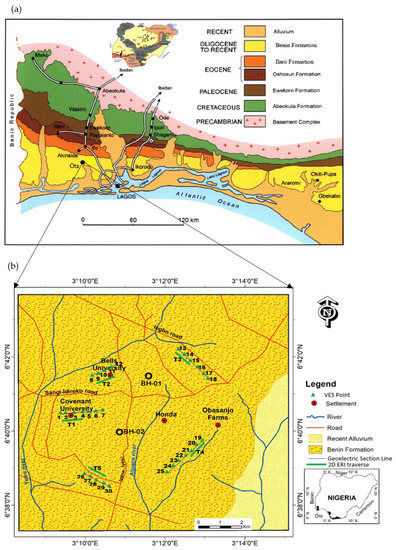
Figure 1
Open AccessArticle
Simulation of Water Quality in a River Network with Time-Varying Lateral Inflows and Pollutants
Water 2023, 15(16), 2861; https://doi.org/10.3390/w15162861 - 08 Aug 2023
Abstract
►▼
Show Figures
Non-point source pollution inflow is one of the main causes of water quality decline in urban river networks. In this paper, aiming at the problem of non-point source pollutant transport in river network, the lateral outflow term in the Saint-Venant equation is improved
[...] Read more.
Non-point source pollution inflow is one of the main causes of water quality decline in urban river networks. In this paper, aiming at the problem of non-point source pollutant transport in river network, the lateral outflow term in the Saint-Venant equation is improved from the previous constant to the time-varying flow process, and a mathematical model considering the time-varying source and sink term is established. Based on the initial rainfall intensity, surface confluence and non-point source pollutant concentration, a method for calculating the time-varying lateral pollutant input of nodes and tributaries with linear increase and exponential decay in the initial rainfall period is proposed. Based on the principle of proximity, the watershed is divided into districts. According to the principle of elevation, the non-point source pollutants are allocated to the calculation nodes of adjacent rivers in a certain proportion and incorporated into the model calculation so as to improve the mathematical model of river network water quality and apply it to the simulation of river network water quality in Maozhou River Basin. Verified by the measured data, the NSE values of the improved model are 0.805 and 0.851, respectively, indicating that the model has reliable hydrodynamic and water quality simulation accuracy, indicating that the model can be applied to the calculation of non-point source pollutants in the basin. Based on the improved model, the variation of COD concentration in the Maozhou River of Shenzhen before and after optimized water replenishment was calculated, and the time variation and spatial distribution law of the sudden drop of water quality in the river network caused by the inflow of non-point source pollution in the initial rainfall runoff and the rapid recovery after optimized water replenishment were revealed.
Full article

Figure 1
Open AccessArticle
Responses of a Submerged Macrophyte Potamogeton crispus and Epiphytic Biofilm to Humic-Substance Enrichment Coupled with Brownification in Freshwater Habitats
Water 2023, 15(16), 2860; https://doi.org/10.3390/w15162860 - 08 Aug 2023
Abstract
►▼
Show Figures
Brownification denotes increasing water color, partly caused by increasing dissolved organic matter of terrestrial origin in freshwater. Brownification has become a wide-spread environmental problem because water color alters the physicochemical environment and biological communities in aquatic ecosystems. However, our understanding of its ecological
[...] Read more.
Brownification denotes increasing water color, partly caused by increasing dissolved organic matter of terrestrial origin in freshwater. Brownification has become a wide-spread environmental problem because water color alters the physicochemical environment and biological communities in aquatic ecosystems. However, our understanding of its ecological effects on aquatic macrophytes is limited. Here, an indoor mesocosm experiment with a common submerged macrophyte, Potamogeton crispus, along an increasing gradient of brownification was conducted over a period of 42 days. Results showed that P. crispus was able to overcome low degrees of brownification owing to the plasticity in morphological and physiological traits and P. crispus growth even benefitted from the concomitant nutrients along with brownification. However, the macrophyte growth was negatively affected by a 10-fold increase in water color beyond its current level. Additionally, collapse in antioxidant systems and potent photosynthesis inhibition implied that P. crispus could not adapt to the low-light stress generated under the high degree of brownification. Epiphytic bacteria are more sensitive to brownification than their hosts. Any degree of brownification initially caused a decrease in microbial diversity of epiphytic biofilm, whereafter the concomitant nutrients under brownification favored the growth of epiphytic microorganisms. The shading effect of a large number of epiphytic biofilms under brownification may further aggravate the low-light stress on macrophytes. Overall, the study provides new insights into the comprehensive effects and underlying mechanisms of brownification on macrophytes.
Full article

Figure 1
Open AccessArticle
Analysis of Seasonal Driving Factors and Inversion Model Optimization of Soil Moisture in the Qinghai Tibet Plateau Based on Machine Learning
Water 2023, 15(16), 2859; https://doi.org/10.3390/w15162859 - 08 Aug 2023
Abstract
►▼
Show Figures
The accuracy of soil moisture retrieval based on traditional microwave remote sensing models in the Qinghai Tibet Plateau (QTP) is unstable due to its unique plateau climate. However, considering the impact of multiple multi-scale factors effectively improves the accuracy and stability of soil
[...] Read more.
The accuracy of soil moisture retrieval based on traditional microwave remote sensing models in the Qinghai Tibet Plateau (QTP) is unstable due to its unique plateau climate. However, considering the impact of multiple multi-scale factors effectively improves the accuracy and stability of soil moisture inversion. This article uses Sentinel-1 and seasonal climate data to analyze factors and influencing mechanisms of soil moisture in the QTP. First, an artificial neural network (ANN) was used to conduct a significance analysis to screen significant influencing factors to reduce the redundancy of the experimental design and insert information. Second, the normalization effect of each factor on the soil moisture inversion was determined, and the factors with significant normalization influences were input to fit the model. Third, different fitting methods combined the semi-empirical models for soil moisture inversion. The decision tree Chi-square Automatic Interaction Detector (CHAID) analyzed the model accuracy, and the Pearson correlation coefficient between the sample and measured data was tested to further validate the accuracy of the results to obtain an optimized model that effectively inverts soil moisture. Finally, the influencing mechanisms of various factors in the optimization model were analyzed. The results show that: (1) The terrain factors, such as elevation, slope gradient, aspect, and angle, along with climate factors, such as temperature and precipitation, all have the greatest normalized impact on soil moisture in the QTP. (2) For spring (March), summer (June), and autumn (September), the greatest normalized factor of soil moisture is the terrain factor. In winter (December), precipitation was the greatest factor due to heavy snow cover and permafrost. (3) Analyzing the impact mechanism from various factors on the soil moisture showed a restricted relationship between the inversion results and the accuracy of the power fitting model, meaning it is unsuitable for general soil moisture inversion. However, among the selected models, the accuracy of the linear fit was generally higher than 79.2%, the Pearson index was greater than 0.4, and the restricted relationship between the inversion results and accuracy was weak, making it suitable for the general inversion of soil moisture in the QTP.
Full article

Figure 1
Open AccessArticle
The Investigation of Local Scour around Bridge Piers with the Protection of a Quasi-Stumps Group
Water 2023, 15(15), 2858; https://doi.org/10.3390/w15152858 - 07 Aug 2023
Abstract
In this study, a quasi-stumps group structure was proposed and placed upstream of the bridge piers to mitigate the scour of the waterflow on the riverbed. Both experiment and numerical simulations using FLOW 3D were employed to study the protective effect of this
[...] Read more.
In this study, a quasi-stumps group structure was proposed and placed upstream of the bridge piers to mitigate the scour of the waterflow on the riverbed. Both experiment and numerical simulations using FLOW 3D were employed to study the protective effect of this structure. The numerical results were in good agreement with the experimental findings. It was found that the quasi-stumps group can effectively reduce the flow velocities around the bridge piers, thereby promoting the deposition of suspended sediment. As a result, there was no erosion around the piers, and instead, siltation was formed, which contributed to the stability of the piers. The deposition height around the piers increased as the L (the horizontal distance between the quasi-stumps group and the piers) decreased and both the P (the height of the quasi-stumps group) and S (the ratio of the area of a single leaf on the quasi-stumps group to the cross-sectional area of a single pier) increased. As the L, P, and S increased, the quantity of suspended sediment deposition over the entire riverbed increased. The optimal combination of the quasi-stumps group’s protective effect was determined to be L = D (pier diameter), P = H (water depth), and S = 0.148.
Full article
(This article belongs to the Topic Advances in River Engineering)
►▼
Show Figures
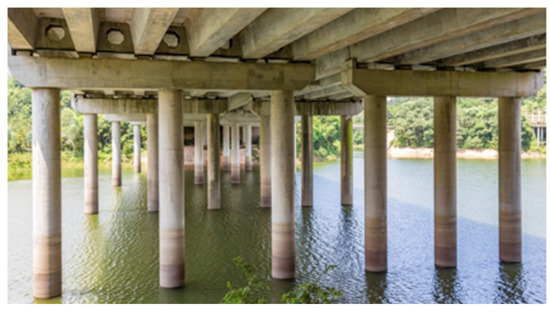
Figure 1
Open AccessEditorial
Adsorption Technology for Water and Wastewater Treatments
Water 2023, 15(15), 2857; https://doi.org/10.3390/w15152857 - 07 Aug 2023
Abstract
This Special Issue includes 12 research papers on the development of various materials for adsorbing different contaminants in water, such as Sb, Cr(VI), Cu(II), Zn(II), fluorine, phenol, dyes (indigo carmine, Congo red, methylene blue, and crystal violet), and drugs (dlevofloxacin, captopril, and diclofenac,
[...] Read more.
This Special Issue includes 12 research papers on the development of various materials for adsorbing different contaminants in water, such as Sb, Cr(VI), Cu(II), Zn(II), fluorine, phenol, dyes (indigo carmine, Congo red, methylene blue, and crystal violet), and drugs (dlevofloxacin, captopril, and diclofenac, and paracetamol). The commercial, natural, and synthetic materials used as adsorbents comprise commercial activated carbon, natural clay and montmorillonite, biosorbent based on sugarcane bagasse or algal, graphene oxide, graphene oxide-based magnetic nanomaterial, mesoporous Zr-G-C3N4 nanomaterial, nitrogen-doped core–shell mesoporous carbonaceous nano-sphere, magnetic Fe-C-N composite, polyaniline-immobilized ZnO nanorod, and hydroxy-iron/acid–base-modified sepiolite composite. Various operational conditions are evaluated under batch adsorption experiments, such as pH, NaCl, solid/liquid ratio, stirring speed, contact time, solution temperature, initial adsorbate concentration. The re-usability of laden materials is evaluated through adsorption–desorption cycles. Adsorption kinetics, isotherm, thermodynamics, and mechanisms are studied and discussed. Machine learning processes and statistical physics models are also applied in the field of adsorption science and technology.
Full article
(This article belongs to the Special Issue Adsorption Technology for Water and Wastewater Treatments)
Open AccessArticle
Carbon Nanotube-Supported FeCo2O4 as a Catalyst for an Enhanced PMS Activation of Phenol Removal
Water 2023, 15(15), 2856; https://doi.org/10.3390/w15152856 - 07 Aug 2023
Abstract
Peroxymonosulfate (PMS) activation has gained increasing attention for its water remediation. In this work, carbon nanotube-supported FeCo2O4 nanoparticles (FeCo2O4/CNT) were prepared and showed tremendous potential as a catalyst for PMS activation. The synergistic effect between FeCo
[...] Read more.
Peroxymonosulfate (PMS) activation has gained increasing attention for its water remediation. In this work, carbon nanotube-supported FeCo2O4 nanoparticles (FeCo2O4/CNT) were prepared and showed tremendous potential as a catalyst for PMS activation. The synergistic effect between FeCo2O4 and CNT in FeCo2O4/CNT promotes its better catalytic performance than individual CNT or FeCo2O4. The synthesized FeCo2O4/CNT could reach 100% phenol removal with a k value of 0.30 min−1 within 15 min ([PMS] = 0.3 g L−1, [FeCo2O4/CNT] = 0.3 g L−1). FeCo2O4/CNT can adapt well to a wide pH range (4–9) and a complex water component (with inorganic ions or organic matter). Moreover, the catalytic mechanism investigation suggested that both radical and non-radical pathways are accountable for the efficient removal of phenol.
Full article
(This article belongs to the Section Wastewater Treatment and Reuse)
►▼
Show Figures

Figure 1
Open AccessArticle
Applying Adaptive Neuro-Fuzzy Inference System to Improve Typhoon Intensity Forecast in the Northwest Pacific
Water 2023, 15(15), 2855; https://doi.org/10.3390/w15152855 - 07 Aug 2023
Abstract
►▼
Show Figures
Typhoon intensity forecast is an important issue. The objective of this study is to construct a 5-day 12-hourly typhoon intensity forecast model based on the adaptive neuro-fuzzy inference systems (ANFIS) to improve the typhoon intensity forecast in the Northwest Pacific. It analyzed the
[...] Read more.
Typhoon intensity forecast is an important issue. The objective of this study is to construct a 5-day 12-hourly typhoon intensity forecast model based on the adaptive neuro-fuzzy inference systems (ANFIS) to improve the typhoon intensity forecast in the Northwest Pacific. It analyzed the improvement of the ANFIS typhoon intensity forecast model by comparing it with the MLR model when only the atmospheric factor or both atmospheric and oceanic factors are considered. This study collected the SHIPS (Statistical Hurricane Intensity Prediction Scheme) developmental data of typhoons in the Northwest Pacific before landing from 2000 to 2012. The input factors of the ANFIS model were simplified by the stepwise regression procedure (SRP). Subtractive clustering (SC) was used to determine the number of ANFIS rules and to reduce model complexity. Model Index (MI) was taken as the clustering standard of SC to determine the network architecture of the ANFIS typhoon intensity forecast model. The simulated results show that the MI could effectively determine the radius of influence of SC. The typhoon intensity forecast was significantly improved after oceanic environmental factors were added. The improvement of RMSE of ANFIS was the highest at 84 h; the improvement of ANFIS on the underestimated ratio was primarily positive. The Typhoon Songda case study shows that the maximum bias of ANFIS is greatly improved, at 60 h of the lead time, and the improvement percentage of maximum bias is the highest (39%). Overall, the ANFIS model could effectively improve the MLR model in typhoon intensity forecast.
Full article

Figure 1
Open AccessArticle
Assessing the Relationship between Ecological Water Demand of Haloxlon ammodendron and Its Wind Erosion Prevention Effect
Water 2023, 15(15), 2854; https://doi.org/10.3390/w15152854 - 07 Aug 2023
Abstract
Desert vegetation in the outer transition zone of an arid oasis serves as a protective barrier against wind and sand, safeguarding the oasis ecosystem. However, intensive agricultural water usage within the oasis has led to water depletion, posing a threat to the survival
[...] Read more.
Desert vegetation in the outer transition zone of an arid oasis serves as a protective barrier against wind and sand, safeguarding the oasis ecosystem. However, intensive agricultural water usage within the oasis has led to water depletion, posing a threat to the survival and growth of desert vegetation, as well as the associated increase in wind and sand phenomena. To ensure the sustainable distribution of water resources and maintain the stability of the oasis peripheral ecosystem, this study aimed to investigate the relationship between the ecological water demand of desert vegetation and its effectiveness in preventing wind erosion. Through a combination of field sample tests, field pit tests, and data analysis, this research focused on Haloxlon ammodendron, the most prevalent species on the oasis periphery, to explore the intricate relationship between its ecological water demand and resistance to wind erosion. The results showed that medium-vegetation-coverage soils exhibited a higher soil moisture content (7.02%) compared to high-vegetation-coverage soils (1.57%) and low-vegetation-coverage soils (3.41%). As the soil water content decreased, the growth rate of H. ammodendron’s plant height, new branches, and crown width decelerated. The ecological water requirement of H. ammodendron during its growth period was 70.95 mm under medium-vegetation-coverage conditions, exhibiting a significant increase of 14.6% and 12.3% compared to high- and low-vegetation-coverage conditions, respectively. Meanwhile, H. ammodendron exhibits remarkable wind erosion prevention effects in moderate coverage conditions, resulting in a significant reduction in surface sand collection and sand transport by 53.15% and 51.29%, respectively, compared to low vegetation coverage; however, no significant difference was observed when compared to high vegetation coverage. The SEM model results revealed that soil water content had an indirect effect on sand transport (R2 = 0.90) and sand collection (R2 = 0.96) through three pathways of action, namely: volatile water content–crown growth rate–wind speed–sediment discharge; volatile water content–plant height growth rate–vegetation coverage–wind speed–sediment discharge; and volatile water content–plant height growth rate–vegetation coverage–sediment accumulation. This study provides valuable insights for the scientific formulation and implementation of strategies aimed at protecting desert vegetation.
Full article
(This article belongs to the Special Issue Water Use/Footprint for Agricultural Products during Production, Trade and Consumption Processes)
►▼
Show Figures

Figure 1
Open AccessEditorial
The Effects of Global Climate Change on Water Level and Salinity: Causes and Effects
Water 2023, 15(15), 2853; https://doi.org/10.3390/w15152853 - 07 Aug 2023
Abstract
Temperature and precipitation patterns are changing considerably worldwide because of global climate change [...]
Full article
(This article belongs to the Special Issue Global Change Effects on Water Level and Salinity: Causes and Effects)
Open AccessArticle
Regional Flow Influenced Recirculation Zones of Pump‒and‒Treat Systems for Groundwater Remediation with One or Two Injection Wells: An Analytical Comparison
by
and
Water 2023, 15(15), 2852; https://doi.org/10.3390/w15152852 - 07 Aug 2023
Abstract
►▼
Show Figures
As a widely employed method for in situ remediation of groundwater contamination, the pump-and-treat (PAT) system involves the management of water recirculation between the extraction and injection wells. The recirculation zone (RZ) of an extraction-injection well pair in a confined aquifer has been
[...] Read more.
As a widely employed method for in situ remediation of groundwater contamination, the pump-and-treat (PAT) system involves the management of water recirculation between the extraction and injection wells. The recirculation zone (RZ) of an extraction-injection well pair in a confined aquifer has been well known. However, PAT systems are more frequently used in unconfined aquifers with a natural regional flow and may not only include one injection well. We develop comparable analytical models for an unconfined aquifer treated by two different system settings, including an extraction well and one injection well (1e/1i system) or two injection wells (1e/2i system). The role of regional groundwater flow is highlighted. Analytical solutions of RZs and recirculation ratios are obtained using complex potential functions, with a new treatment of the jump of the stream function at a branch cut. Results indicate that the shape of RZs and the recirculation ratio nonlinearly depend on several dimensionless parameters linked to the pumping rate and direction of regional flow. Compared to the 1e/1i system, the two injection wells in the 1e/2i system may reduce the integrity of RZs and decrease the recirculation ratio; however, they lead to a higher allowable pumping rate in satisfying the limitations of the water table in wells. This study suggests a useful methodology for analyzing PAT systems with multiple injection wells and provides new insights into RZs between extraction and injection wells.
Full article

Figure 1
Open AccessArticle
Computing of Permeability Tensor and Seepage Flow Model of Intact Malan Loess by X-ray Computed Tomography
Water 2023, 15(15), 2851; https://doi.org/10.3390/w15152851 - 07 Aug 2023
Abstract
Malan loess is an eolian sediment in arid and semi-arid areas. It is of great significance to study the pore structure of Malan loess for its evolution, strength, and mechanical properties. In order to quantitatively characterize the absolute permeability tensor of Malan loess
[...] Read more.
Malan loess is an eolian sediment in arid and semi-arid areas. It is of great significance to study the pore structure of Malan loess for its evolution, strength, and mechanical properties. In order to quantitatively characterize the absolute permeability tensor of Malan loess and to simulate the seepage process of Malan loess, this study calculated the specific yield of intact Malan loess with a homemade seepage experimental device and recorded the water flow process on the surface of Malan loess during the seepage process. Modern computed tomography was used to scan the intact Malan loess samples from Jiuzhoutai, Lanzhou (western part of the Loess Plateau, China); the specific yield of the intact loess was used as the parameter value for the threshold segmentation of the scanned image for the 3D reconstruction of the connected pore space, the solver program in AVIZO software was used to solve the absolute permeability tensor of Malan loess using the volume averaging method combined with the CT scan to reconstruct the 3D pore space, and the simulation of the seepage process was carried out. The simulation results showed that Malan loess is a highly anisotropic loess; the absolute permeability in the vertical direction is 9.02 times and 3.86 times higher than the permeability in the horizontal direction. The pore spaces are well connected in the vertical direction (forming a near-vertical arrangement of pipes) and weakly connected in the horizontal direction. In the seepage simulation, it was found that the water flows first along the vertically oriented channels and then fills the horizontally oriented pores; the absolute permeability coefficient was calculated to be 0.3482 μm2. The indoor seepage experiment was consistent with the simulation experiment, which verifies the reliability of the calculated model.
Full article
(This article belongs to the Special Issue Hydrological Simulation for Erosion and Infiltration)
►▼
Show Figures
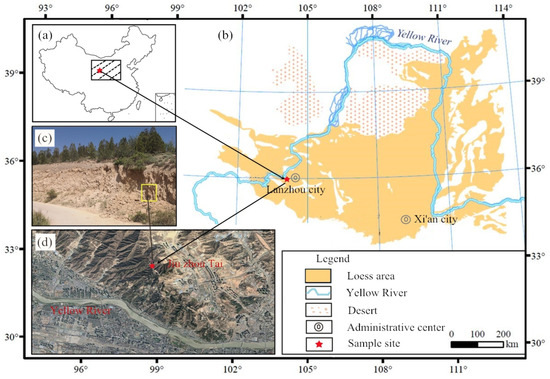
Figure 1
Open AccessTechnical Note
The Importance of Widespread Temperature Conditions on Breakup Characteristics: The Case of Sagavanirktok River, Alaska, USA
Water 2023, 15(15), 2850; https://doi.org/10.3390/w15152850 - 07 Aug 2023
Abstract
Daily average springtime air temperatures from four weather stations distributed along north–south and nearly east–west directions within or on the divide of the Sagavanirktok River watershed in Arctic Alaska were studied and compared with discharge measurements and field observations made from 2015 to
[...] Read more.
Daily average springtime air temperatures from four weather stations distributed along north–south and nearly east–west directions within or on the divide of the Sagavanirktok River watershed in Arctic Alaska were studied and compared with discharge measurements and field observations made from 2015 to 2021 during breakup. The results indicate that under widespread air temperature events, during El Niño, rapid and dynamic breakup can occur (promoting sediment transport along the stream), while during La Niña, slow and thermal breakup can be expected. Due to these climate pattern effects, open channel conditions (i.e., ice-free channels) are reached earlier (18 May 2015) during El Niño and later (7 June 2021) during La Niña.
Full article
(This article belongs to the Special Issue Research on Hydrology and Hydrochemistry in Siberia and the Arctic)
►▼
Show Figures

Figure 1
Open AccessArticle
Supercritical Froude Number Flow through Ducts with Statistically Roughened Walls
Water 2023, 15(15), 2849; https://doi.org/10.3390/w15152849 - 07 Aug 2023
Abstract
►▼
Show Figures
High-speed fluid flows over roughened surfaces occur in many engineering applications; one important application involves high velocity water flows in pipelines with roughened interior walls where the wall roughness affects head loss estimates necessary for engineering design purposes. The present analysis provides an
[...] Read more.
High-speed fluid flows over roughened surfaces occur in many engineering applications; one important application involves high velocity water flows in pipelines with roughened interior walls where the wall roughness affects head loss estimates necessary for engineering design purposes. The present analysis provides an analytical solution of the fluid physics underlying the induced static pressure profile resulting from high Froude number supercritical velocity through duct with random wall roughness. The analytic solution of the hyperbolic governing small perturbation velocity potential equation subject to high Froude number flows brings forward characteristic wave solutions that determine the static pressure profile in a duct with random height wall roughness. While current engineering practice utilizes semi-empirical engineering equations employing test data to determine the friction factor, velocity and static pressure profiles and head loss for different roughness types in different sized ducts as a function of Reynolds number (as summarized in a later section of the paper), the present analysis provides a new analytical method to determine the fluid physics involved in the static pressure change induced by wall random roughness in ducts subject to high Froude number supercritical flows.
Full article
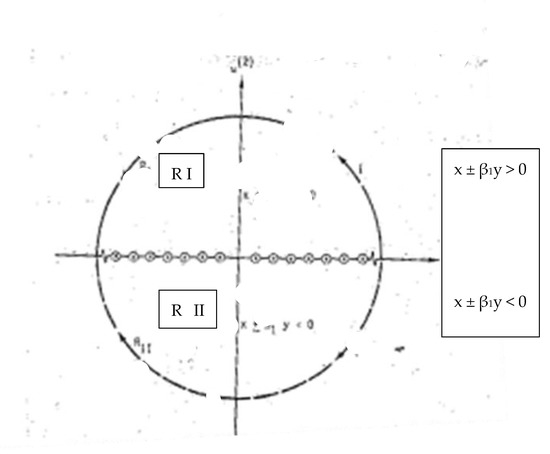
Figure 1

Journal Menu
► ▼ Journal Menu-
- Water Home
- Aims & Scope
- Editorial Board
- Reviewer Board
- Topical Advisory Panel
- Instructions for Authors
- Special Issues
- Topics
- Sections & Collections
- Article Processing Charge
- Indexing & Archiving
- Editor’s Choice Articles
- Most Cited & Viewed
- Journal Statistics
- Journal History
- Journal Awards
- Society Collaborations
- Conferences
- Editorial Office
Journal Browser
► ▼ Journal BrowserHighly Accessed Articles
Latest Books
E-Mail Alert
News
Topics
Topic in
Agriculture, AgriEngineering, Energies, Sustainability, Water
Emerging Agricultural Engineering Sciences, Technologies, and Applications
Topic Editors: Muhammad Sultan, Yuguang Zhou, Redmond R. Shamshiri, Muhammad ImranDeadline: 31 August 2023
Topic in
Energies, Geosciences, JMSE, Minerals, Water
Basin Analysis and Modelling
Topic Editors: Jingshou Liu, Wenlong Ding, Ruyue Wang, Lei Gong, Ke Xu, Ang LiDeadline: 20 September 2023
Topic in
Energies, Materials, Processes, Water, J. Compos. Sci.
Advances in Adsorption Desalination and Cooling Systems
Topic Editors: Jaroslaw Krzywanski, Marcin Sosnowski, Karol Sztekler, Anna Pajdak, Anna Zylka, Anna Kulakowska, Karolina Grabowska, Dorian SkrobekDeadline: 30 September 2023
Topic in
Energies, Membranes, Molecules, Separations, Water
Sustainable Water Purification Technologies for Multiple Applications
Topic Editors: Marco Pellegrini, Cesare Saccani, Alessandro GuzziniDeadline: 15 October 2023

Conferences
21–25 August 2023
The 5th International Conference on “The Status and Future of the World’s Large Rivers”

28 August–2 September 2023
18th International Conference on Environmental Science and Technology | CEST2023

Special Issues
Special Issue in
Water
Effects of Microplastics Pollution in the Aquatic Environment
Guest Editor: Judith S. WeisDeadline: 10 August 2023
Special Issue in
Water
Climatic Trends and Impacts of Global Change in Europe and in the Mediterranean Basin
Guest Editors: Roberto Coscarelli, Tommaso CaloieroDeadline: 21 August 2023
Special Issue in
Water
Advances in Floodplain Morphodynamics of Lowland Rivers
Guest Editor: Tomasz FalkowskiDeadline: 4 September 2023
Special Issue in
Water
Inland Surface Water and Deep Learning
Guest Editors: Min Feng, Chengquan Huang, Do-Hyung Kim, Wenlong JingDeadline: 10 September 2023
Topical Collections
Topical Collection in
Water
Water Policy Collection
Collection Editors: Meri Raggi, Davide Viaggi, Giacomo Zanni


.png)

